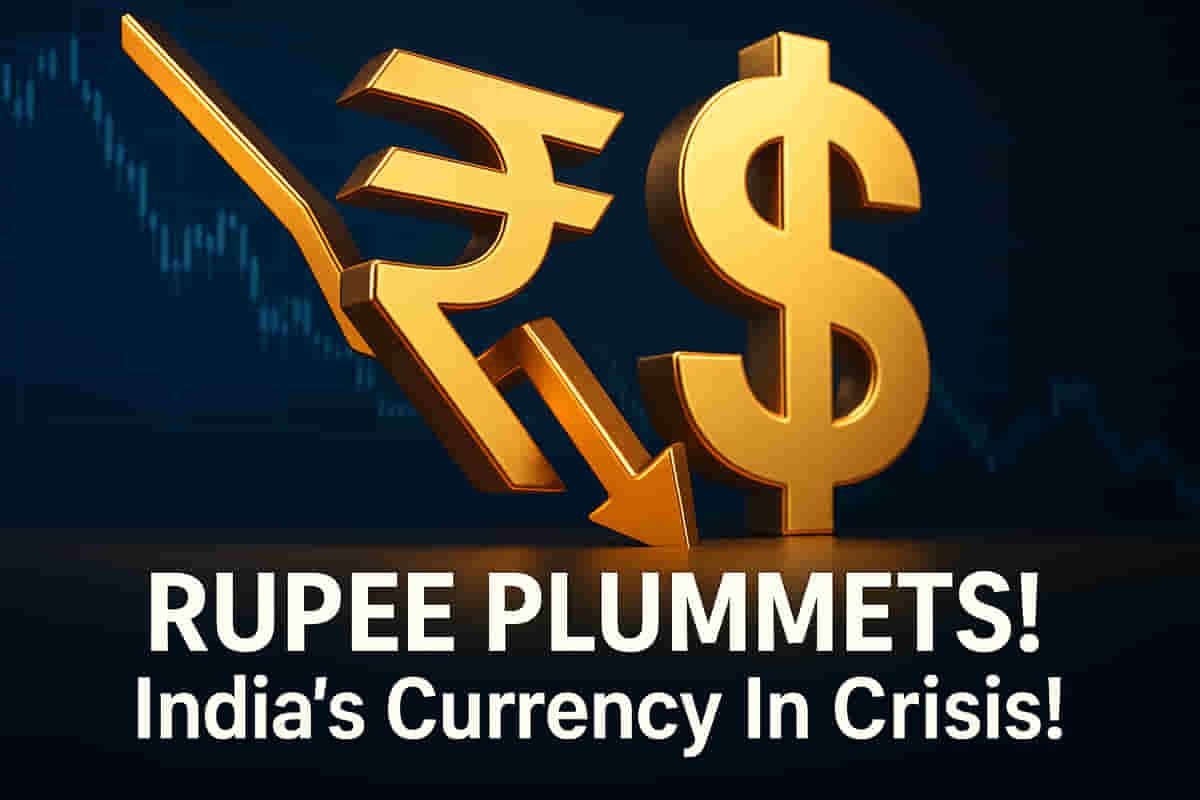Indian Rupee Drops Sharply Against US Dollar Amid Global Economic Pressures
Economy
|
30th October 2025, 3:47 PM

▶
Short Description :
Detailed Coverage :
The Indian rupee fell significantly by 47 paise, closing at 88.69 against the US dollar. This depreciation was mainly due to a stronger greenback, influenced by hawkish commentary from the US Federal Reserve. Federal Reserve Chair Jerome Powell indicated that further interest rate cuts in December were not a certainty, pushing US Treasury yields higher and strengthening the dollar against emerging market currencies. Domestic market weakness, with the Sensex and Nifty closing lower, and substantial foreign institutional investor outflows (Rs 3,077.59 crore) further pressured the rupee. Additionally, month-end dollar demand from oil marketing companies contributed to the decline. Analysts expect the rupee to trade with a mild downward bias in the near term, although falling crude prices might provide some support.
Impact: This development directly impacts India's currency market, making imports more expensive and potentially contributing to inflation. It also affects the cost of foreign investments and the competitiveness of Indian exports. The sentiment in the domestic stock market is also influenced by currency movements and foreign fund flows. Impact Rating: 7/10
Difficult Terms Explained: * Greenback: A common nickname for the United States dollar. * Hawkish Commentary: Statements from a central bank official that suggest a preference for tighter monetary policy, often associated with higher interest rates to control inflation, rather than looser policy aimed at stimulating growth. * US Federal Reserve: The central bank of the United States, responsible for monetary policy. * Federal Open Market Committee (FOMC): A committee within the Federal Reserve that manages U.S. monetary policy, including setting interest rates. * Basis Points: A unit of measure used in finance to describe the percentage change in a financial instrument or market rate. One basis point is equal to 0.01% (1/100th of a percent). * Emerging Market Currencies: The currencies of developing countries that are experiencing rapid growth and industrialization. * Dollar Index: A measure of the value of the U.S. dollar relative to a basket of foreign currencies, commonly the euro, Japanese yen, British pound, Canadian dollar, Swedish krona, and Swiss franc. * Brent Crude Futures: A global benchmark for the price of oil, derived from crude oil produced in the North Sea. * Foreign Institutional Investors (FIIs): Investors from foreign countries who invest in the domestic stock markets of another country. * USDINR Spot Price: The current exchange rate between the US dollar and the Indian rupee for immediate delivery.